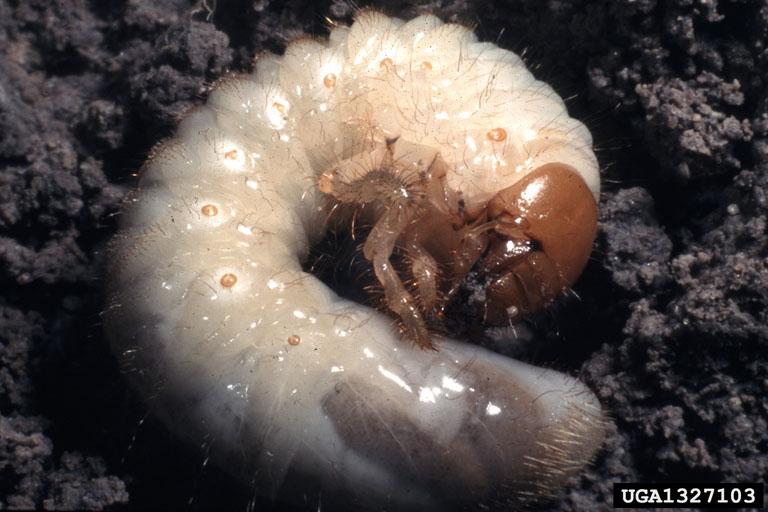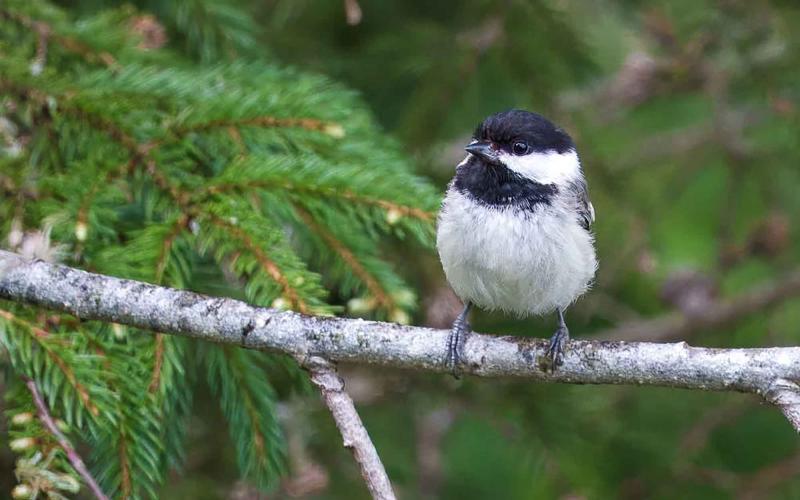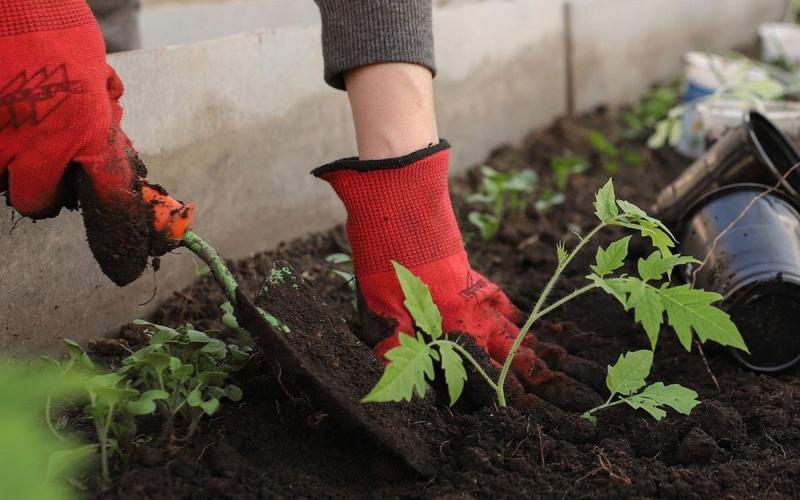Written by Leo Schleicher, former Professor & SDSU Extension Turf Specialist.
Injury to cool-season turfgrasses may be severe during mid-summer to early fall when plants are stressed from high temperatures and insufficient moisture. For example, high levels of stress at this time of year often increase susceptibility to injury from certain insect pests, such as white grubs.
About Grubs

White grubs are root-infesting larvae that are the immature stages of scarab beetles. Larvae are easily recognizable, having a C-shaped, white to cream-colored body, tan to brown head, 3 pairs of legs, and transparent abdomen. At this time of year, larvae are near the surface and are actively feeding on turfgrass roots. The affected turfgrass may turn brown and die from drought stress due to the inability to take up water from loss of roots. Oftentimes, the turf can easily be picked up in large sections, exposing the feeding grubs. Additional, and perhaps greater, turf damage may be caused by animals feeding on grubs, including skunks, moles, and birds.
Species and Lifecycle
Common turf-infesting white grubs in South Dakota include the May/June beetle, Northern masked chafer, black turfgrass ataenius, and more recently, the Japanese beetle. The May/June beetle has a three-year life cycle compared to the others, which are annual grubs. Adult beetles emerge from soil to mate in early summer following metamorphosis. Injury to turfgrass from adults is minor except for the Japanese beetle which is a voracious feeder of plant foliage. Following mating, eggs are laid below or near the soil surface. Eggs hatch into small larvae that eventually molt into two larger instars. The third and final instar is generally the most damaging, foraging nearer the soil surface where the majority of roots are.
Minimizing Damage
Population thresholds have been established as a guideline for initiating control methods, such as insecticides; however, control thresholds vary depending on grub species, turfgrass species, moisture status of the turf, and turf use and expectations. Grubs slowly move forward beneath the surface to adjacent, unaffected areas. Damage can often be minimized with frequent irrigation so that surviving roots following feeding can take up water, allowing the grass to recover. Lower populations of grubs in dry, low-maintenance sites rarely require control measures since moist, succulent turfgrass is preferable for egg laying. Heavy, infrequent watering during the egg laying period may reduce population numbers.
Management
Because egg laying adults of annual grubs tend to return to previous infestation sites, one can anticipate that control measures may be needed the following year. Although pesticides may be required to prevent loss of large areas of turf, they should not be the first or only control method in an integrated pest management (IPM) program. Insecticides containing the active ingredients halofenozide (Mach 2) or imidacloprid (Merit) can be applied in mid-spring for control the entire season. These insecticides disrupt the molting process between larval instars and are relatively safe for mammals and the environment. An excellent approach is to apply a turf fertilizer in early May that contains either insecticide, provided the previous year’s infestation warrants it. Most other insecticides affect the pest’s nervous system and must be applied when larvae are close to the soil surface. Placement of insecticide below the thatch into the soil where grubs are feeding usually requires heavy irrigation following application, as these products tend to bind to thatch and organic matter. These insecticides should not used as a blanket application, but only in areas infested by grubs. As with all pesticides, follow label directions explicitly.


